Om Nain
Nain, Naien, Naein Tudeshk, Tudesk, Toodeshk The town of Nain is located in the desert, about 140 km east of Isfahan. In Nain, there are no old traditions for hand-knotted carpets to draw from. In the early 1900s, the town had a booming textile industry, but when it started to...Read more
Showing 1–30 of 138 results
-
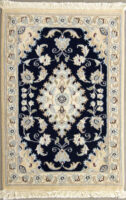
Nain Tæppe
tg0646157cm x 39cmkr. 1.500,- -
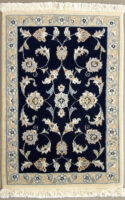
Nain Tæppe
tg0645960cm x 40cmkr. 1.500,- -

Nain Tæppe
tg0503460cm x 40cmkr. 1.200,- -
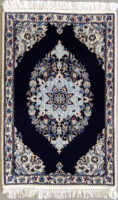
Nain Tæppe
tg0634675cm x 50cmkr. 3.200,- -
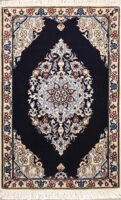
Nain Tæppe
tg0764176cm x 50cmkr. 4.200,- -
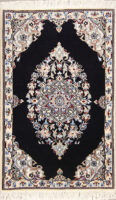
Nain Tæppe
tg0764077cm x 50cmkr. 4.200,- -
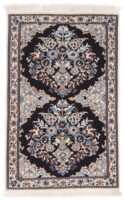
Nain Tæppe
CW8065986778cm x 50cmProduct from remote storageOnline
Priskr. 4.680kr. 3.510,- (-25%) -
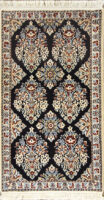
Nain Tæppe
tg0764587cm x 50cmkr. 4.900,- -
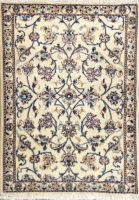
Nain Tæppe
tt26683cm x 60cmkr. 2.900,- -
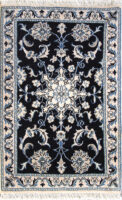
Nain Tæppe
tg0826390cm x 60cmkr. 990,- -

Nain Tæppe
CW7815325092cm x 60cmProduct from remote storageOnline
Priskr. 1.920kr. 1.440,- (-25%) -

Nain Tæppe
tg0766190cm x 63cmkr. 6.500,- -
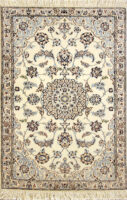
Nain Tæppe
tg0766292cm x 63cmkr. 6.500,- -

Nain Tæppe
7950140cm x 50cmkr. 7.900,- -

Nain Tæppe
tg05814103cm x 73cmkr. 6.900,- -
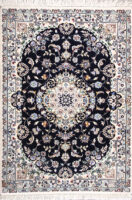
Nain Tæppe
384325114cm x 82cmkr. 12.500,- -
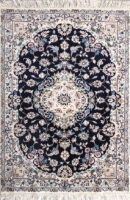
Nain Tæppe
384326119cm x 88cmkr. 9.990,- -
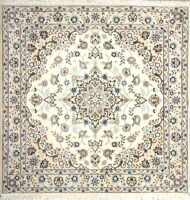
Nain Tæppe
384324107cm x 105cmkr. 12.500,- -

Nain Tæppe
tg07903125cm x 90cmkr. 7.900,- -

Nain Tæppe
384323187cm x 63cmkr. 12.990,- -

Nain Tæppe
tg07464197cm x 61cmkr. 11.500,- -

Nain Tæppe
tg07906203cm x 60cmkr. 11.800,- -

Nain Tæppe
tt00079204cm x 60cmTilbudSale! kr. 6.930,- (-30%) -

Nain Tæppe
2046-128138cm x 89cmkr. 38.000,- -

Nain Tæppe
tg07904205cm x 60cmkr. 11.800,- -

Nain Tæppe
tk337140cm x 90cmkr. 11.900,- -

Nain Tæppe
tg07905205cm x 65cmkr. 11.800,- -

Nain Tæppe
tg07907200cm x 68cmkr. 11.800,- -

Nain Tæppe
209HK208cm x 66cmkr. 12.800,- -
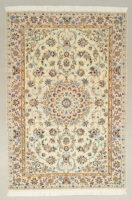
Nain Tæppe
9969145cm x 100cmkr. 21.000,-
Showing 1–30 of 138 results
Mere om Nain
Nain, Naien, Naein Tudeshk, Tudesk, Toodeshk
The town of Nain is located in the desert, about 140 km east of Isfahan. In Nain, there are no old traditions for hand-knotted carpets to draw from. In the early 1900s, the town had a booming textile industry, but when it started to decline in the 1930s, carpet knotting took off. The textile industry would prove to be a good foundation. In the clothing industry, they were able to spin very fine yarn, which would benefit the carpet handicraft. With this particularly finely spun yarn, it is possible to knot very dense carpets. The original carpets from Nain are among the finest and best carpets knotted in Iran. The patterns are beautiful and harmonic, often involving birds and flower vines or ‘mehrab’, prayer alcoves with mosaic patterns. The most used is the shah Abbas medallion pattern. The colours are mostly limited to light cream, blue, light blue and golden. However, you often see patterns accentuated by a fine silk border around each one, which is called a highlight. The warp and weft are usually made of cotton. The carpets are knotted with Senneh knots. The knot density is 300,000 – 1,000,000 knots per m2.
The town of Nain resembles something taken straight out of 1001 Nights. From the old buildings all over town, it is easy to see the history of the place stretching far back in time. One of them is the Jame Mosque, which is one of the first four mosques that were built in Iran after the Arabian invasion in the 600s. You need to dig deep here to find water. When I was visiting in 2010, I was lucky enough to be allowed to come and see the underground watermill, Rigareh, which is also one of the town’s old constructions. We had to go down a full 28 metres, along 140 metres of underground passageways, before we reached the actual watermill. It was an interesting experience and a much-needed breath of cool air. For it is hot in Nain, and we visited the town in June, when the temperature easily surpasses 40 degrees Celsius. It seems even hotter when you are going through carpet stack after carpet stack in the hunt for the perfect products. Nain carpets are split into three quality categories. Nochler (9-lain), Sischler (6-lain) and charlar (4-lain). These quality designations refer to the number of threads that the warp is spun from. There are typically six or nine threads, but warp is also made from spinning four threads. The fewer threads, the thinner the warp, which allows for finer knotting. However, you should be aware that within each individual category, there are several quality levels. In particular, please note that many carpets with the Nain design are being knotted elsewhere in Iran. Carpets are available with this design in qualities that span both extremes. They can be the absolute best carpets on the market, but also the crudest and lowest in quality. In the towns of Nain and Tudesk, the knotting of fine carpets did not begin until the 20th century. Some of the finest carpets from here were made by the Habibian family, which previously worked with other kinds of textiles. Unfortunately, their signature has probably been copied the most. Only a small portion of the carpets that bear the “Habibian” signature is actually genuine Habibian carpets. Today, apart from Habibian, there are other recognised carpet makers in Nain, such as Darkesh, Khamesi, Youssoffi, Mohammadi, Ahmadi Akhavan and Ghorbani.
Source:
You are reading an extract from the book ‘Oriental Carpets, Knottet with Love’ by Martin Munkholm.
This extensive book about all that is carpets can be borrowed in Danish libraries or be bought following this link: https://belle-rugs.dk/se-taepper/bog-aegte-taepper-knyttet-med-kaerlighed/
The book is published by Muusmann Forlag.
For more info: http://muusmann-forlag.dk/
See video about Nain rugs here: https://www.youtube.com/embed/AM2v55BJbHU
You can find our selection of Nain rugs underneath.
